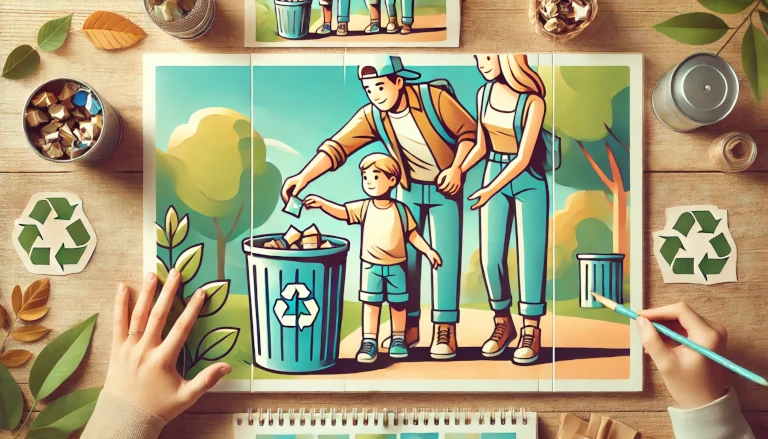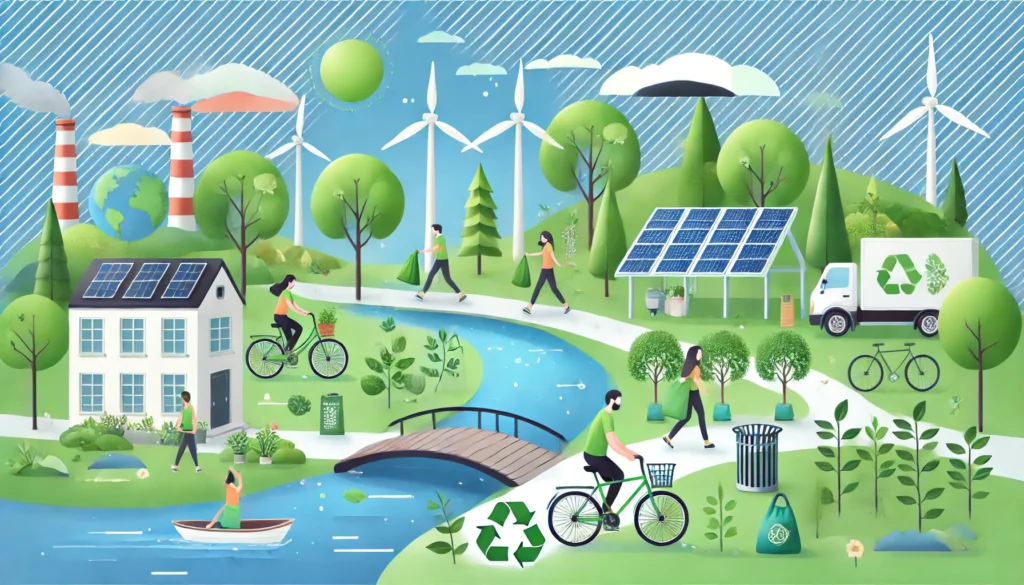Teaching children to avoid public littering is an essential step toward raising responsible and eco-conscious individuals. By building these habits early on, parents and educators can help kids develop a lifelong respect for the environment. Teaching kids to keep public spaces clean not only reduces litter but also instills a sense of responsibility and pride in their surroundings.
In this blog post, we’ll explore habit-building strategies that can help kids understand the importance of avoiding littering, the value of cleanliness, and how they can contribute to a cleaner environment. By following these tips, you can guide children toward making positive choices for the environment.
Why is it Important to Teach Kids to Avoid Public Littering? 🌿
Learning to avoid littering is about more than just cleanliness—it’s about environmental stewardship. When kids understand the impact of littering, they become more aware of their actions and the consequences they have on the environment. Teaching kids to avoid littering helps them develop eco-friendly habits, promotes community pride, and encourages them to make environmentally conscious choices.
Tips for Building Habits in Kids to Avoid Public Littering 🧼🚯
Here are some practical strategies to help kids develop the habit of avoiding littering:
1. Lead by Example 👨👩👧👦
Children learn by observing adults. By demonstrating good habits yourself, such as disposing of waste properly, recycling, and keeping your surroundings clean, you can set a positive example for kids to follow.
- Example: When out in public, make a point to find a garbage bin or carry your trash home. Kids will notice and emulate your behavior.
2. Teach the Importance of Cleanliness and Responsibility 🌍🧹
Explain why it’s essential to keep public spaces clean. Discuss how littering affects animals, plants, and people, and how everyone has a role to play in maintaining cleanliness.
- Example: Use visual aids like pictures of polluted areas and clean environments to show the difference. Explain how litter can harm wildlife and make places unsafe.
3. Make Clean-Up Fun with Games 🎮🌈
Turn clean-up activities into fun games. You can organize a litter hunt where kids collect litter in a specific area and reward them for their efforts. This makes cleaning up exciting and instills a sense of achievement.
- Example: Challenge kids to find and pick up five pieces of litter within a certain area or time frame. Make it a family activity to encourage bonding and teamwork.
4. Provide Accessible Solutions 🗑️
Teach kids where to dispose of different types of waste and make sure they know where to find garbage bins or recycling stations. Show them how to separate waste, and if bins are not available, encourage them to carry the waste home for proper disposal.
- Example: Carry a small bag for trash when you go out with kids. Teach them to hold onto litter until they find a bin or get back home.
5. Encourage Recycling and Reusing ♻️
Educate kids about recycling and the importance of reducing waste. Explain what items can be recycled and how they can give old items a new purpose, like using old jars as storage containers.
- Example: Create a recycling station at home and let kids sort items into the correct bins. Explain how recycled items are turned into new products.
6. Reward Positive Behavior 🎖️
Recognize and reward children when they make an effort to avoid littering. Positive reinforcement helps kids feel proud of their actions and encourages them to repeat the behavior.
- Example: Use stickers, small treats, or extra playtime as rewards when kids dispose of waste correctly or help clean up public spaces.
7. Incorporate Litter Education in Stories and Activities 📚
Use storybooks, videos, or activities that teach kids about littering and environmental protection. Many books and resources are available that make these concepts easy and engaging for children.
- Example: Read a story about a character who keeps their surroundings clean, or watch a short video that explains the effects of littering on animals and nature.
8. Participate in Community Clean-Up Events 🌍👫
Involve kids in local clean-up events. Participating in community activities allows them to see the collective impact of their actions and fosters a sense of responsibility and community pride.
- Example: Join a neighborhood clean-up day and encourage kids to participate. Give them gloves and bags to help pick up litter safely.
Why It’s Important to Start Early with Habit Building 🌿
Building eco-friendly habits early helps children internalize the importance of caring for the environment. Kids who learn these values early on are more likely to grow into adults who respect public spaces and advocate for environmental protection. Establishing these habits in childhood lays the foundation for lifelong environmental stewardship.
Real-Life Example: How One School Promoted Anti-Littering Habits 🌍🧒
At a local primary school, teachers implemented an eco-friendly curriculum that included activities like litter hunts, recycling projects, and discussions about pollution. They also set up recycling bins in classrooms and rewarded students who used them correctly. By the end of the term, students were more mindful of their waste disposal habits and even started bringing eco-friendly practices into their homes.
Empowering Kids to Avoid Public Littering 🌱
Teaching children to avoid littering is essential for creating a cleaner, healthier environment. By setting a positive example, providing accessible solutions, and making clean-up activities fun, you can help kids develop lifelong habits that contribute to a more sustainable world. Let’s empower the next generation to be responsible stewards of the environment, one habit at a time.
Discover more from Green Ecosystem - Renewable Energy, Agriculture, and Environmental Sustainability
Subscribe to get the latest posts sent to your email.


